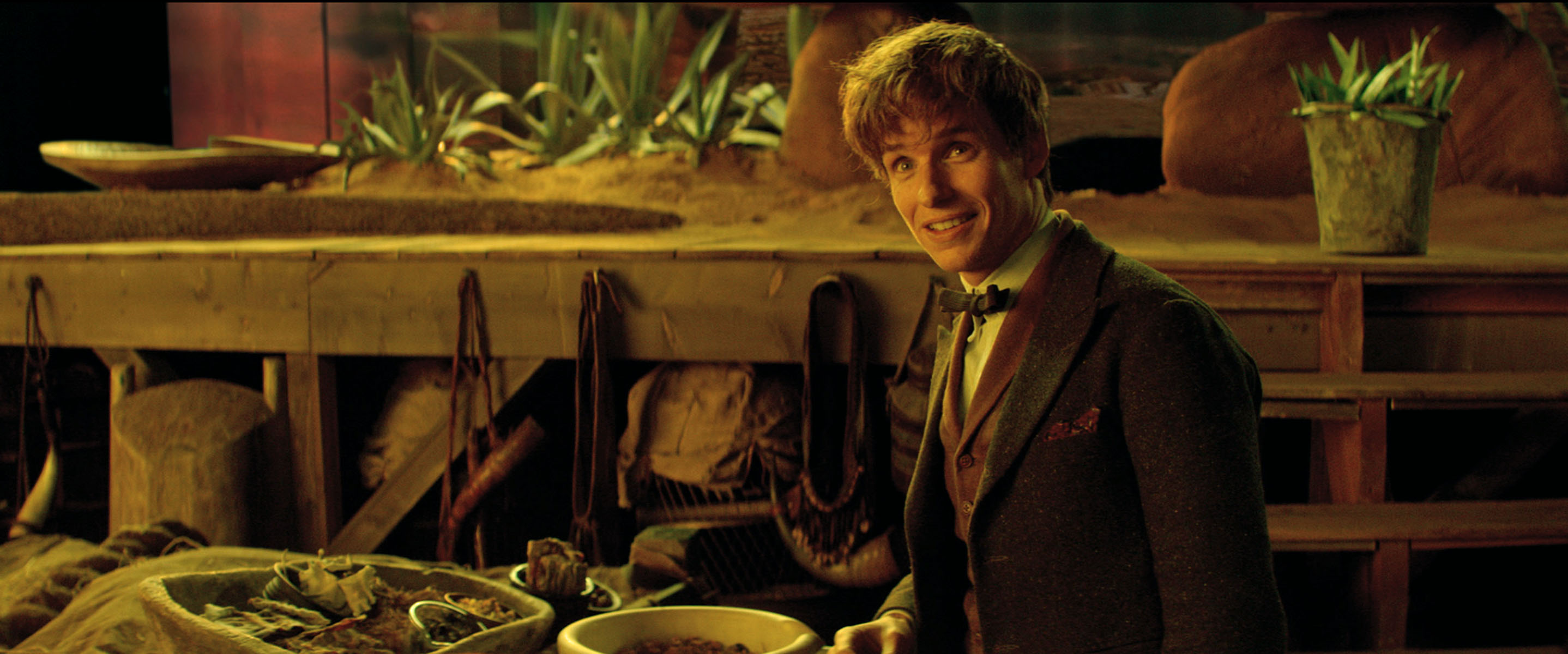Fantastic Beasts and Where to Find Them is a fun movie that expands on the Harry Potter universe.
And that's about it for me... kind of. Honestly, I've never been a fan of the 1920's setting, and it was a change of pace that I didn't quite know what to do with when Harry Potter went there. For me, the fantastical settings of Hogwarts and the Forbidden Forest were much more appealing from a fantastical theme and, in my opinion, the recently released Doctor Strange achieved the 'magic-in-the-real-world' setting much better. It felt very out of place for me in FBAWTFT, and that's probably because Doctor Strange's universe is set up in a way for exceptional beings to exist alongside the non-exceptional and doesn't have to lean on the secrecy element that the Harry Potter universe does.
The movie was enjoyable, but my favourite parts were most certainly getting to know all the fantastic creatures locked away in Newt Scamander's briefcase.
One thing that surprised me though was not anything explicitly said or done by the characters, but more the thematic portrayal of anger in the film after the 9/11 attacks in the Unnited States.
Recently in mainstream cinema, especially science fiction, we have been obsessed with the destruction of urban spaces. Going back to the Avengers franchise, New York was completely devastated by alien forces and then again in Age of Ultron. The Hunger Games: Mockingjay Part 2 also features a great deal of urban devastation. In fact, many top grossing movies (especially ones of science fiction which, as a genre, often makes parallels that comments on society) feature the destruction of urban spaces. What made me pause to think while I watched FBAWTFT was the source of destruction. From these earlier sci-fi movies, we had outside forces invading the heroes' home and causing mayhem (the Avengers series). We shift from this to the Hunger Games, where the suppression comes from within society, but marginalized groups (the 12 Districts) after being pushed to a breaking point. And now we have the Harry Potter series with the destruction of 1920's Manhattan.
MAJOR SPOILERS AHEAD
What I find interesting about the source in this movie in particular, is that it comes from a teenage boy (maybe older teens? I don't think it's explicitly said in the movie). Credence is an orphaned teen who is regularly beaten by his adoptive mother, a woman obsessed with the evils of witchcraft in that Salem witch hunt kind of way. Having to conceal his magic for so long leads him to develop an "Obscurus, a dark, destructive force inadvertently manifested by young magical children forced to conceal their powers. The force can be unleashed during periods of anger and stress" (Wikipedia). Like the Districts in The Hunger Games, he finally reaches his own breaking point and unleashes a horrific force against the city.
I find this choice interesting, as I feel there are some contemporary comparisons we can make with our youth.
Like Credence, today's North American youth are brought up with a generation of very troubled parental figures. As Credence is brought up by his xenophobic mother figure (anti-witchcraft), so too are today's youth (anti-Muslim/Immigrant). This atmosphere breeds a darkness - a literal manifestation in the film as a cloud of darkness - in the younger generation; one that eats away from the inside to suddenly explode. I think our anxiety as a society is having a profound effect on our youth, and it's interesting to consider what kind of future we may be breeding with our fears. Credence's anger only unleashes until Graves, an adult who he felt was the only person to accept him, eventually betrays Credence for his own ambitions.
To me, it's interesting that adults are both the ones to condemn and offer salvation to Credence at the end of the movie. On the one hand, Credence's adoptive mother and Graves are both responsible for this force within Credence as he's a product of his environment. On the other, Newt and friends attempt to save him with kindness and warmth once denied Credence. Finally, adults again eventually kill Credence via wizard firing squad symbolizing the suppression of government bodies. Credence is effectively a young man so frustrated with his environment that his subconscious unleashes to effectively raze it to the ground. A man is simply trying to find a space to exist in a place that's hostile towards him, despite moments of kindness offered to him in doses. The muggle world fears his otherness or seeks to control it, one side wants to rehabilitate him, and another finds it easier to eliminate him in fear, again, of discovery.
I also find it troublesome how the solution to this encounter is simply "forget about it" via mass brainwashing, to put it simply. They erase the destruction of the city by re-constructing it. They wipe the memories of all witnesses. There's no scene of mourning for Credence. Except for a brief flash seen only by Newt suggesting he stills somewhat exists as a being, no character addresses the extermination of a youth. Is this the only way we can think to move forward? Not confronting our darkness, but simply waving it away with a magic wand until it eventually boils over again?
To me, that's terribly sad and foreboding for our culture. I'd like to spend more time look at these trends, but I hope you enjoyed these sound bites from my thoughts on this. I'm curious how these themes will change over time, or if they even do.






0 comments:
Post a Comment